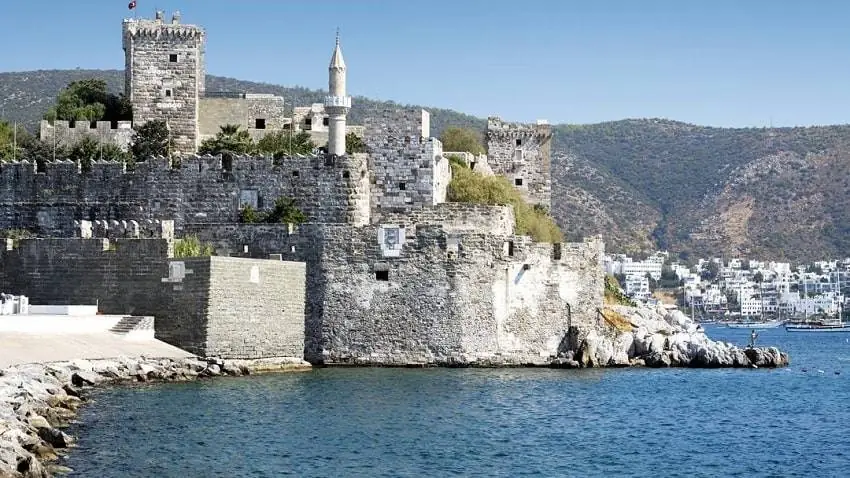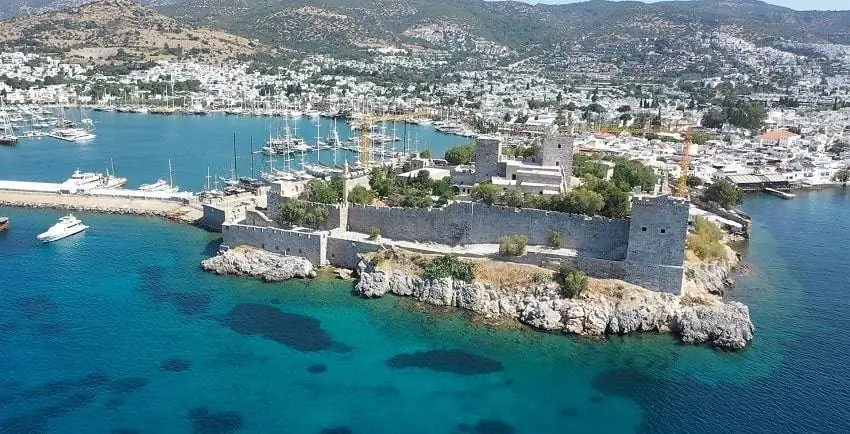The Bodrum Castle (St. Peter’s Castle) is situated on a small rocky peninsula between two sheltered bays in Bodrum, on Anatolia’s south-western coast. This peninsula, which was inhabited and known as Zephyrion in antiquity, was most likely utilised as a back base by the Byzantines in the early Middle Ages and then by the Turks. The Order of St. John of Jerusalem (also known as Knights of St. John, Knights Hospitallers, Knights of Rhodes) built the castle under the direction of The Grand Master Philibert de Naillac at the beginning of the 15th century A.D., and ruled it for almost 120 years until Suleiman I (Suleiman The Magnificent) conquered Rhodes in 1522.

The Bodrum Castle served as a modest garrison base throughout the Ottoman period, until being converted into a prison in 1895. On the 26th of May 1915, a French warship bombarded the castle during the First World War. The castle was severely damaged as a result of this, and the prisoners were relocated inland and the fortress was evacuated. The Italians then stormed Bodrum and stationed their troops at the castle, which served as their headquarters. The Italian military forces were dispersed after the Turkish War of Independence, led by Mustafa Kemal, was declared a success on July 5, 1921. During World War II, from 1939 through 1945, the Castle was once again used as a military base.
This year, 150,000 local and international tourists visited the rebuilt Bodrum Castle in Mugla’s Bodrum area. Bodrum Castle, which was built 600 years ago by the Knights of Sen Jan, began restoration work in 2017. The walls of the castle, which is a UNESCO World Heritage Site and houses the world’s most important underwater archaeological museum, have been strengthened and the items have been preserved.

♦ 4 Days Turkey Tour – Cappadocia Ephesus Pamukkale Tour
The renovations at Bodrum Castle, which let guests inside some areas last year during the restoration phase, has now been completed, and all halls have been unveiled. This year, 150,000 local and international tourists flocked to the ancient landmark, which greeted them under the shadow of the Eiffel Tower.
In a remark, Huseyin Toprak, director of the Bodrum Museum of Underwater Archaeology, stated:
“The halls opened for visits consist of an indoor area of 1,300 square meters. There are 12 different halls. In 6 of these halls, our underwater works are exhibited, 5 of our works that come out of the land are exhibited, and in 1 of them we give information. Our halls are seriously attracting visitors. Despite the pandemic this year, the total number of domestic and foreign visitors is close to 150,000. This figure is predominantly foreign tourists. We are happy to be able to welcome so many visitors during the pandemic period.”

